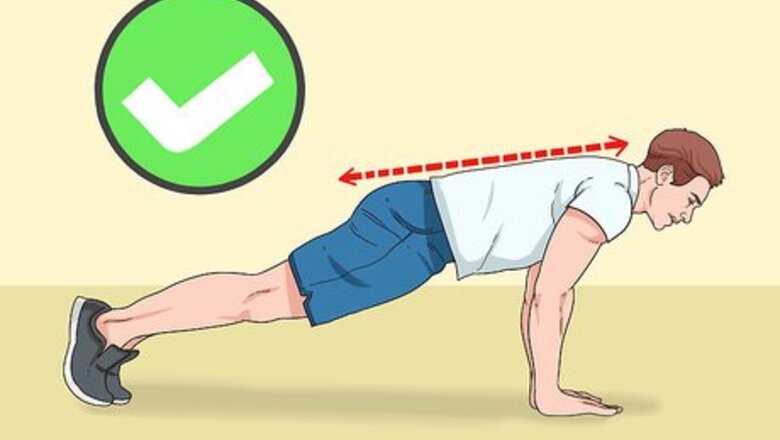
views
X
Expert Source
Monica MorrisCertified Personal Trainer
Expert Interview. 18 November 2019.
You can challenge yourself further by adding weights and by varying your push ups.
Performing the Push Up
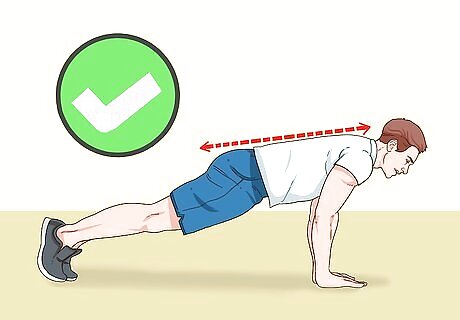
Make sure your form is correct. When performing the push up, your lower back must be straight, i.e., not sagging or arching, and your feet must be shoulder width apart. Your elbows should be tucked close to your body, i.e., at a 20 to 40 degree angle from your abdomen. As you go down, make sure your chest gets as close to the floor as possible. Make sure to tighten your abdomen, legs, and buttocks. This will prevent your back from arching and sagging. Try not to let your hips touch the floor. They should be on the same level as your shoulders.
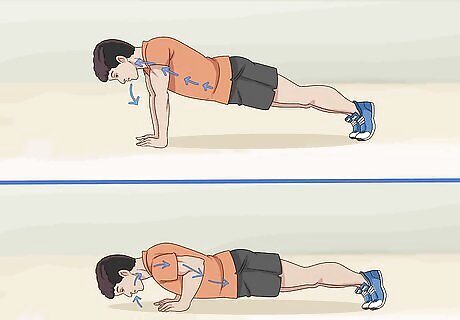
Breathe correctly. When you are performing the push up, make sure to inhale as you go down. Then exhale as you go back up. If it is hard for you to remember when to exhale, count out loud as you do your push ups. The act of talking will force you to exhale as you push up.
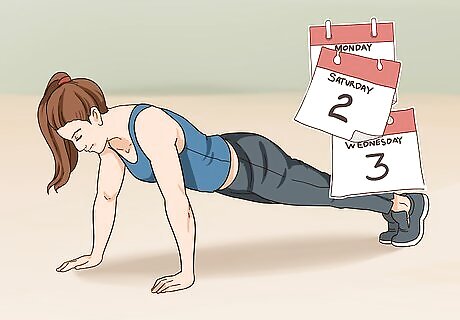
Start out easy. Start out by doing as many push ups as you comfortably can. This is called a set. Then do two more sets. Make sure to rest for 60 seconds or more in between sets. Practice this three to four times a week, or every other day until you are comfortable. For example, if you can only do seven full push ups, then start out by doing three sets of seven push ups every other day until you are comfortable.
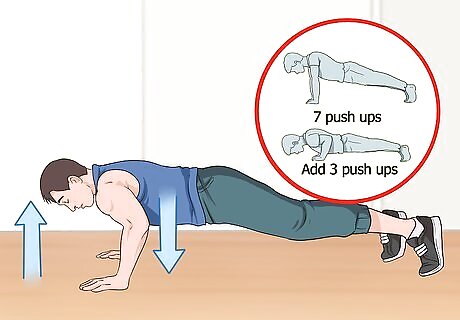
Add more push ups. Once you can comfortably do your normal number of push ups, add three to five more push ups. Adding more push ups will challenge your muscles, enabling you to build more muscle.
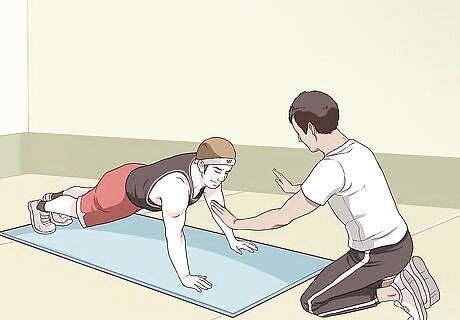
Be consistent with your routine. Make sure to stick to your routine. If you find it hard to stick to a routine, then ask a friend to join you. Alternatively, you can hire a personal trainer to keep you on track as you strive for your goal. For example, if you have been doing push ups three days a week, then do not throw off your routine by reducing it to twice a week. Depending on the intensity of your routine, you may see results in one to two months.
Adding Resistance
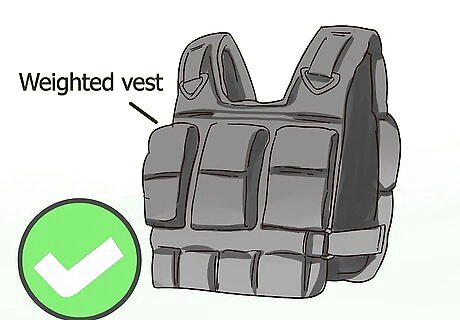
Wear a weighted vest. Weighted vests are a great way to add resistance to your push up and build your muscles further. Strap the weighted vest on as tight as you can while still remaining comfortable. This way, you can prevent the vest from sagging and hindering your movements. Then do your normal push ups. You can purchase weighted vests from your local sporting goods store.
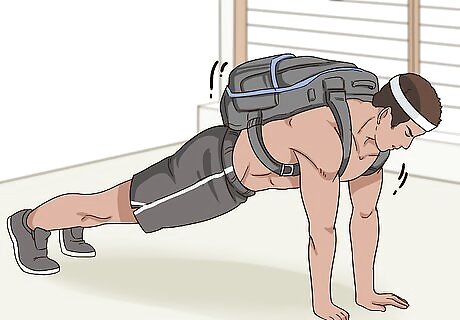
Use a weighted backpack. This is a great way to add resistance that’s an alternative to wearing a weighted vest. Fill a backpack with books, bags of rice, or other heavy objects until the weight of the backpack is equal to or less than 20% of your body weight. Then do your normal push ups. For example, if you weigh 120 pounds, then your backpack should weigh a maximum of 24 pounds. It’s important to keep the weight within 20% of your body weight in order to prevent overloading your spine, shoulders, and elbows.
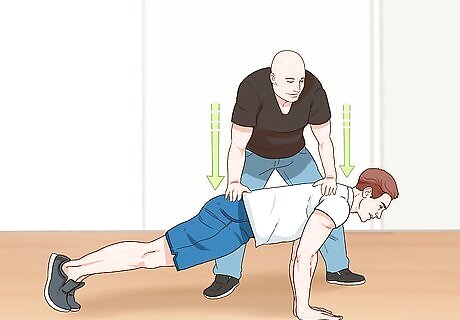
Have a friend apply pressure onto your back. While you are doing your normal push up, ask a friend to place their hand on your upper back. Tell them to apply pressure on your back as you raise yourself up from the push up. Make sure your friend applies consistent pressure for each push up.
Varying Your Push Ups
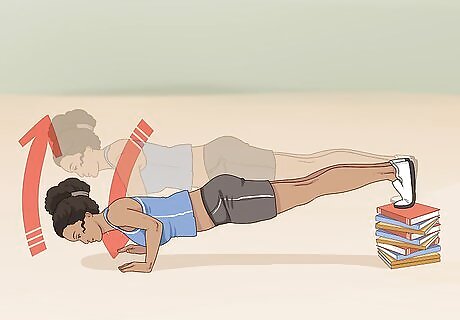
Do an incline push up. This type of push up involves elevating your feet. Start by elevating your feet about 10 to 12 inches from the ground. Then do a normal push up. Use a stack of books or another type of platform to elevate your feet. The higher you elevate your feet, the harder the push up will be.
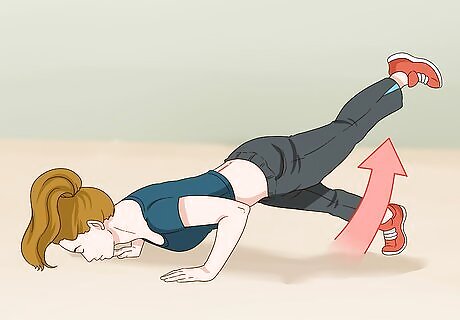
Do a single leg push up. Get into the normal push up position. Make sure your back is straight, your feet are shoulder width apart, and your elbows are tucked into your sides. Then lift one of your legs and perform a regular push up. Do a number you are comfortable with. Then repeat the push up, lifting your other leg.
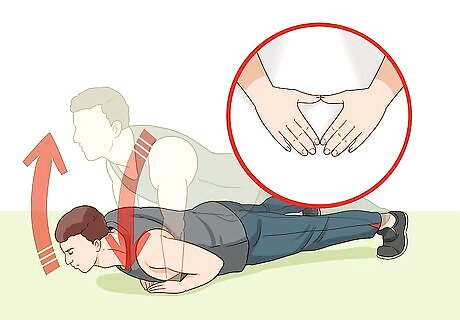
Try a diamond push up. Position your hands in front of your chest on the floor. Press your thumbs and fingers together to form a diamond shape with your hands. Make sure your legs and back are straight. Then do a normal push up. Diamond push ups are great for working out your triceps.
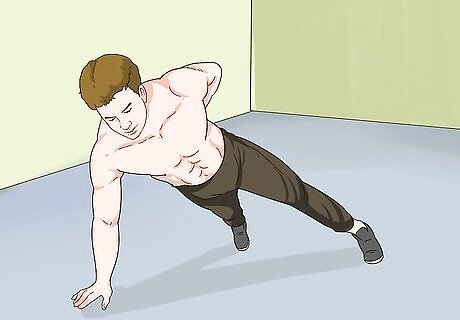
Attempt a one-handed push up. For this push up, place your feet wider than shoulder width apart. Place one hand more to the center of your chest. Place your other hand behind your back. Then lower yourself and push up. Make sure to keep your elbow close to your body as you do your push ups. If one-handed push ups are difficult for you, then start training your body by doing a regular push up, but with your hands close together like a diamond push up. This will help you progress from the regular, two-handed push ups to the more difficult one-handed push ups.

Try a plyometric push up. Get into the standard push up position. Lower yourself to the floor as you normally would while doing a regular push up. As you extend back up, push up as fast as you can and with as much force as you can until your hands become airborne. Then go back to the starting position and repeat. Challenge yourself by clapping your hands while they are airborne in between push ups.


















Comments
0 comment